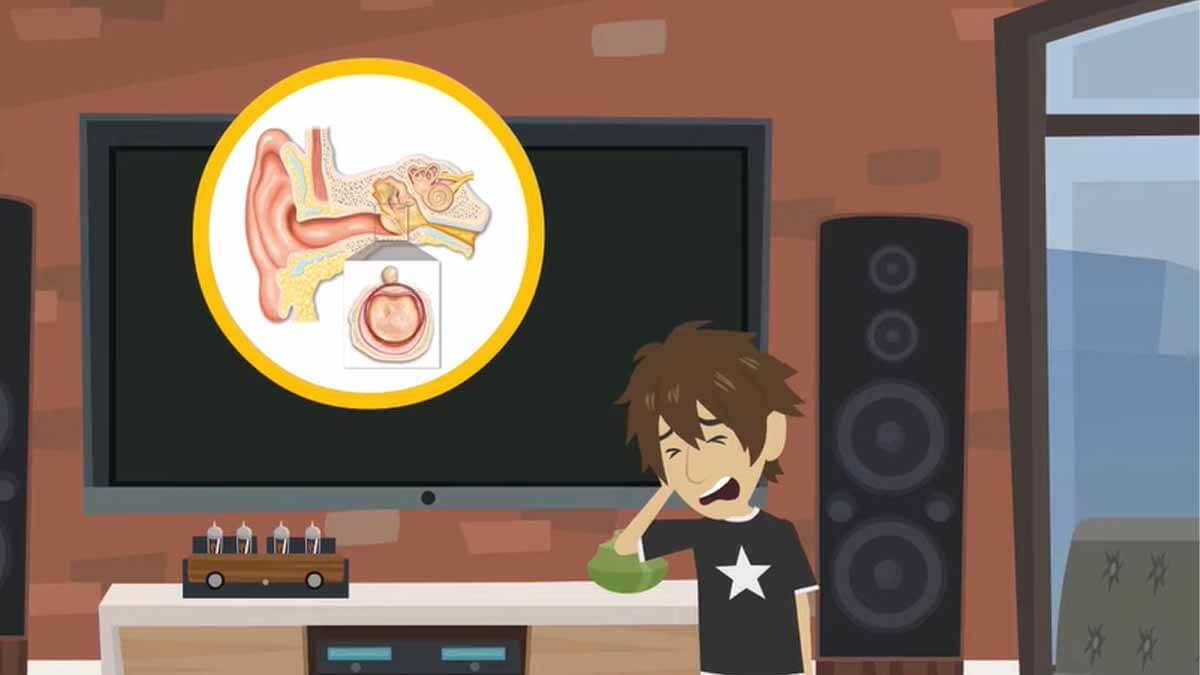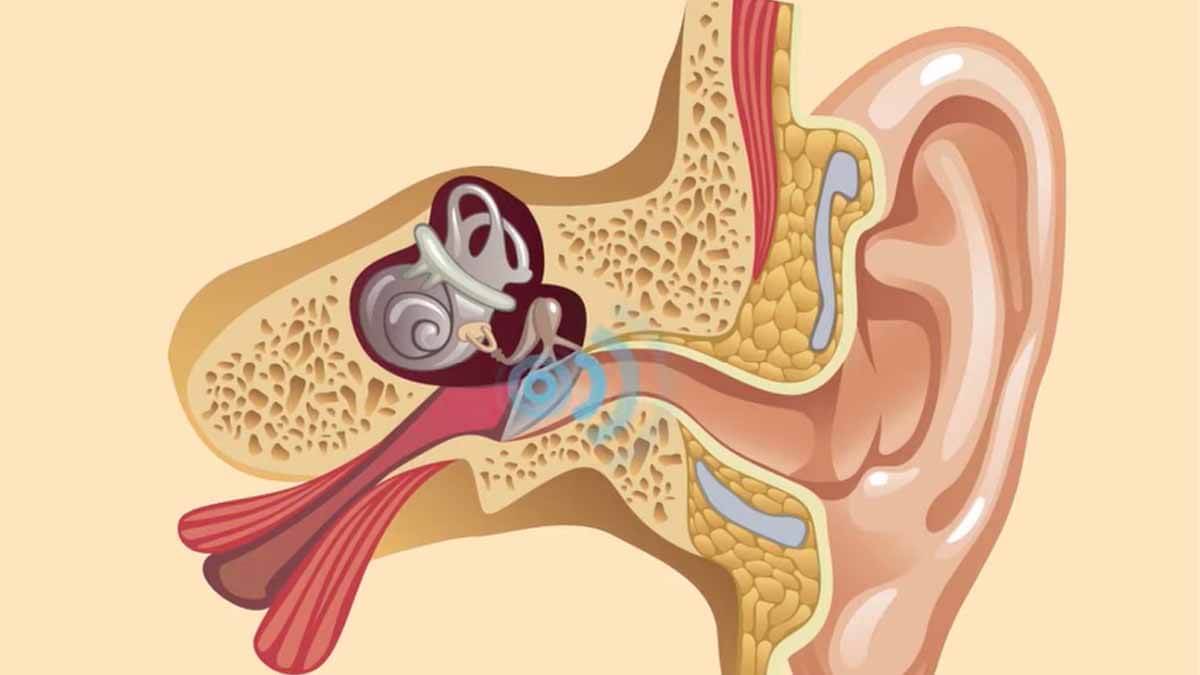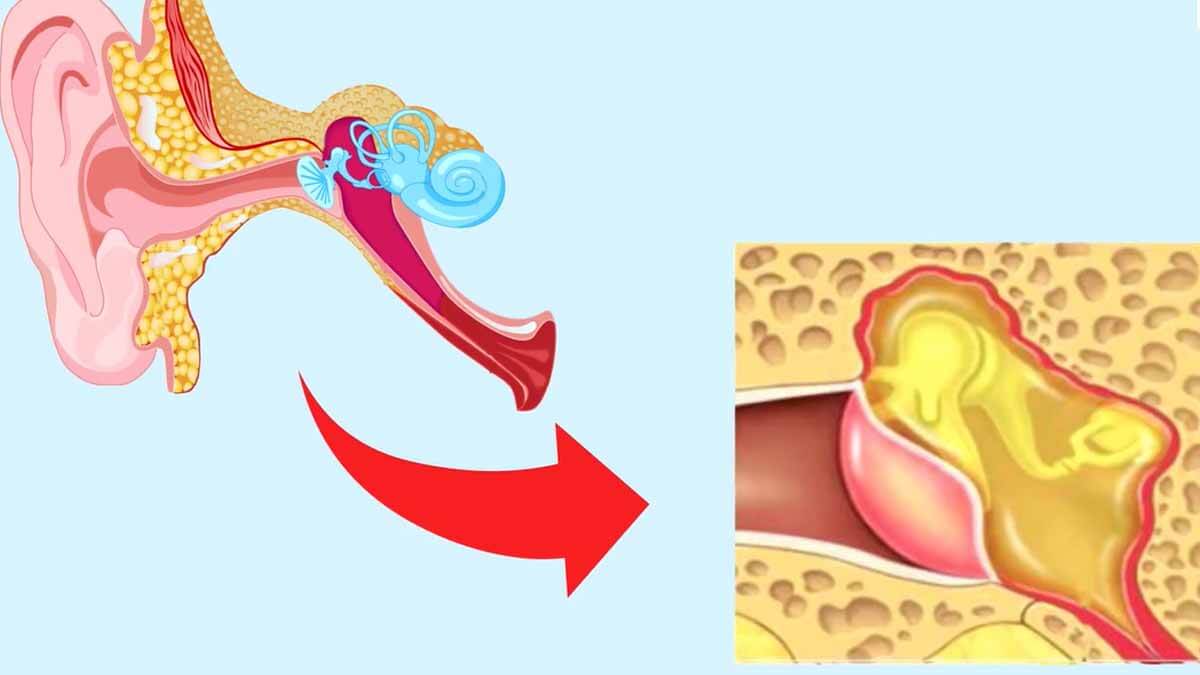 |
| ear infection symptoms adults |
Ear infection symptoms adults include severe ear pain, headache, dizziness, swelling, ear tenderness, abnormal discharge, and temporary hearing loss. When an earache or pain starts, many of us think it's caused by a virus or bacteria. Experts say that the number of ear infections has increased this year compared to last year. It is usually more common in children. Children and adults are more prone to these ear infections during winter. Because viruses and bacteria thrive in cold weather, it is not yet known exactly whether omicrons are behind it. An ear infection can spread to the middle ear. A symptom of an ear infection in adults is the accumulation of pus behind the eardrum in many people.
Ear infections in children also ear infection symptoms adults are: bad sleep, Ear drainage
 |
| Ear infections in children are |
1. Pulling near the ear.
2. Feeling upset or restless.
3. An ear infection can also cause a fever.
4. bad sleep
5. Crying at night.
6. Ear drainage.
7. Loss of appetite.
Causes of ear infection:
The main cause of ear infections (ear infection symptoms adults) is the reduction in colds. The resulting irritation and trapped moisture can cause bacterial otitis media. May cause a sore throat and respiratory infections. Because the Eustachian tube gets blocked. Then we feel pain in our ears. According to experts, it can lead to severe ear problems if left untreated. Because ear infections are associated with throat and nose infections.
{tocify} $title={Table of Contents}
inner ear infection symptoms adults:
inner ear infection symptoms adults: Ear pain, ear softening, abnormal discharge, headache, ear swelling are the symptoms of ear infection in adults. Ear pain is likely to intensify when exposed to cold air or going outdoors. This problem is more in winter. Excessive cold can also affect the health of our ears. Which can cause ear pain. Blood circulation decreases during cold. Which causes ear infection.
What are the types of otitis media?
 |
| ear infection symptoms adults |
Acute otitis media: Acute otitis media is the most common type of ear infection. It comes on suddenly and is mild. These include swelling and infection of the middle ear. There is a possibility of fluid retention behind the ear and fever.
Chronic otitis media with effusion: This is a condition in which fluid repeatedly backs up into the middle ear, whether or not an infection is present. Affects a person's hearing and reduces their ability to fight other infections.
Chronic Suppurative Otitis Media: This is a condition where ear infections often do not go away even with treatment. This can lead to holes in your ears. This is also a symptom of an ear infection in adults.
Otitis media with effusion: After an ear infection, you may have some fluid left under your ear. This residual fluid is called otitis media, which has no symptoms. But you can show the doctor the remaining fluid.
How to diagnose otitis media (ear infection symptoms adults)
1. Physical Examination: The doctor will first examine the patient physically. Ask about the patient's medical and family history and ask about the patient's symptoms.
2.Tympanometry: Closes the ear canal with an instrument. Air pressure in the canal causes movement of the eardrum. This test helps quantify how well the eardrum moves. An indirect measure of the pressure present in the middle ear.
3. Tympanocentesis: In tympanocentesis, the doctor uses a small tube to open the eardrum to drain fluid from the middle ear. This fluid is tested for the presence of viruses and bacteria.
4. Otoscopy: The doctor will use an instrument with a light on one end to diagnose ear infections. This is known as pneumatic otoscopy. An otoscope helps to check if there is any fluid inside the ear or behind the ear.
How to Prevent Otitis Media (ear infection symptoms adults)
1. Avoid smoking as it causes various complications including harm to children's health such as: Breathing problems can also increase ear infections so do not smoke in front of children.
2. Wash hands regularly, share food, toys and avoid catching colds.
3. Control allergies.
4. Consult a doctor if you notice your baby snoring or mouth breathing.
5. Feed the bottle while drinking water or something else.
6. Make sure your child gets age-appropriate vaccinations.
symptoms of an ear infection in adults or what to do if the ear is infected?
 |
| ear infection symptoms adults |
Let's find out what to do if your ears are swollen.
middle ear infection symptoms adults: There are three parts of the human ear namely the outer ear, middle ear, and inner ear and if you have pus or water coming out of your ear you know it is coming from the middle ear so we know that usually people call this problem as ear infection but ear infection can happen to people of any age but children. This disease is more common. Also, you will be surprised to know that rural people have more problem of infection than city people because they are less alert about these things.
Why are the ears ripe?
We all have a tube called the Eustachian tube in our skull, with one end in the middle ear and the other end behind the nose in a place called the nasopharynx. Children's tube is shorter.
It is wide and straight. Therefore, while feeding the mother's breast milk or bottled milk, the baby's head should be slightly elevated, otherwise, some fluid may go into the middle ear. As a result, children's ears may become inflamed. Children who have frequent colds, upper respiratory infections, sinusitis from frequent colds, frequent tonsil infections, and enlarged adenoids reduce the normal function of the Eustachian tube.
This causes a lot of pain and fever in the ear and eardrum leaks. If you don't get treatment then the hole becomes permanent. After that, even if there is an infection, water or pus starts coming out of the ear. Adults can also have this problem if they suffer for a long time.
How to know if your ears are ringing (ear infection symptoms adults)
 |
| ear infection symptoms adults |
1. Symptoms of middle ear infection symptoms adults: are pus-filled or watery ears. This fluid may be odorous or odorless. Sometimes the pus can be mixed with blood. There is a type of ear infection where it is dry for a few days and after a few days it becomes wet and the ear oozes with pus and water. There is another type whose ears never dry
2. Ringing in the ears or head. Dizziness and loss of balance. Many people may suddenly experience severe pain in the ears and fever.
3. Hearing loss and blocked feeling in the ears and constant discomfort.
Its treatment:
If there is ear itching or other symptoms with copious pus discharge, the patient is treated with oral antibiotics, antibiotic ear drops, and antihistamines. You have to follow some rules. For example, not taking a bath with a dip, not cutting excess water.
These are the symptoms of ear infection symptoms adults. Due to these, your ear problem may increase. Avoiding Cold Avoid cold things like ice cream, and water from the refrigerator, and do not clean the ears unnecessarily. It is forbidden to clean the ears by sticking cock sticks, matchsticks, pens etc. inside the ears. These cannot be done. Most of these treatments cure the disease and the ear canal closes. This medicine may not work if your eardrum is enlarged and discharges pus frequently. So if you are suffering from ear infection then try to get treatment early.
Some Home Remedies to Relieve Earache (ear infection symptoms adults)
There is no specific time of onset of ear pain, it can be any time in the morning, afternoon, night. A bacterial infection in the ear usually causes pain. You may also be coughing from an old cold. Also, if water gets into your ears, you may experience earache. In such a situation, there is no option but to consult a doctor.
Before you go to the doctor, you can try some home remedies for ear pain. For example:
Warming it with a soft cloth and shaking it relieves ear pain. Also, those who have pus in their ears can shake it to drain the pus and reduce the pain.
Neem leaf juice can reduce your ear pain(ear infection symptoms adults)
First, take some clean neem leaves, then squeeze the juice from the leaves and apply two to three drops in the ear.
Then your ear pain will decrease. Neem leaves also cure your teeth and gum problems. Neem juice is good for your teeth. You can use neem leaves to get rid of hair fall and dandruff. Neem leaf juice can be used on burns and cuts. It works well to increase the immunity of our body.
Neem is beneficial for keeping insects away from your home. Works well to reduce your fever.
The acid present in vinegar works well to reduce ear pain.
Mix equal amounts of white vinegar and rubbing alcohol in a bowl. Apply 2-3 drops of infected canap with a dropper. Then lie like this for five minutes.
Then tilt the head to the other side and squeeze out the liquid inside. It is also very popular to use vinegar to enhance the taste of your cooking, remove the smell of fish and meat, and preserve food, fatty foods and pickles. It works well to cook food faster, to increase the nutritional value and taste of food. Apple cider vinegar works very well to reduce your weight.
Vinegar works to reduce cholesterol in the body and reduce frequent hunger pangs.
Heat two cloves of garlic and olive oil. Garlic contains antibiotic and analgesic properties. Mix well before adding garlic. Once the oil is warm, strain it and apply 2-3 drops on the painful ear. Applying this oil after two hours will reduce your pain.
Olive oil contains emollients that relieve ear discomfort.
Olive oil has many benefits like it cures your diabetes, strengthening bones, and curing breast cancer. Olive oil works well for weight loss. If you use olive oil instead of cooking oil, you will lose a lot of weight. Use olive oil in your favorite dishes or drizzle olive oil over a salad.
It also regulates your cholesterol. Also, olive oil lowers your bad cholesterol levels and helps increase your good cholesterol levels thereby reducing the risk of heart disease. Also consuming olive oil will help reduce your ear infections.
Heat olive oil and apply 2-3 drops of oil in the ear and if you want, you can apply olive oil until your earache subsides.
Mint(ear infection symptoms adults)
Mint helps destroy bacteria. Mint is quite popular due to its medicinal properties. Not knowing some of the benefits of mint. Squeeze a few mint leaves to extract the juice and then pour two drops of the juice into the ear. It works well to cure your ear problems. Also helps in removing the human shakti. Mint leaves remove problems like gastric, flatulence, and indigestion. Peppermint helps reduce menstrual cramps. Helps you sleep better. Mint leaves work well to relieve your energy and fatigue. Due to the antibacterial properties that mint leaves have, it helps kill germs in the mouth.
Sleeping Time:
You should take care not to put pressure on your ears while sleeping. Many sleep with their head on a hard pillow. This can cause more pressure in your ears. Which aggravates your earache. In this case you can sleep upright.
Ginger: (ear infection symptoms adults)
Ginger also helps in curing various infections and pain. The antibacterial properties in the ginger fight against ear infections. That hurts your ears. Also, if there is an infection in the pulmonary arteries and breathing is difficult, take two spoonfuls of ginger juice, honey, and labor juice mixed with a cup of warm water twice a day and drink it like tea.
The cough will get better and you will see good results within a few days. Also, olive oil helps in controlling your high blood pressure and ginger is a tonic for your stomach and liver which is very beneficial for health.
Keep in mind that these home remedies will give you temporary relief if a bacterial infection occurs. But will not get rid of your ear problem. There is no alternative treatment for these.
When are ear infection symptoms more common in adults?
Ear infections in adults or children are more common in autumn and winter because it is colder during this time, and children under 2 years of age are more likely to suffer from this disease.
It is also noted that adults have more ear infections during the winter months because during this time cold and flu viruses can cause inflammation in the ear canal, so we need to be careful that no bacteria or virus can lodge inside the ear. Due to this ear problem, many people have colds and coughs and respiratory infections are also seen. Another reason why adult ear infections are more common in the winter months is that cold and flu viruses can cause inflammation in the ear canal and this can throw off the immune system, making ear infections more common. Infection can cause your eardrum to burst so be careful yourself and warn others.
What causes ear infection symptoms in adults?
Symptoms of ear infections in adults can range from mild to severe and the common symptoms are: You feel unwell with an earache, headache with high fever, and sore throat and you may also lose balance.
ear infection symptoms adults are: Water gets into the ear as a result of earwax, which can cause your ear to become inflamed and pus will come out. This is mainly caused by water contaminated with bacteria and fungi.
Again, otitis media is caused by a virus or bacteria that causes inflammation of the middle ear, which can collect as fluid in the middle ear and reduce your hearing and cause other complications such as Mastoiditis means an infection behind the eardrum.
Again we can sometimes see inflammation of the outer part of the ear canal caused by bacteria, yeast, or fungus known as chronic otitis externa.
People with diabetes are at increased risk of this infection because their immune system is weakened so this problem is more pronounced. Also, diabetes often makes it difficult to recognize due to poor circulation and nerve damage. will grow rapidly(ear infection symptoms adults)

